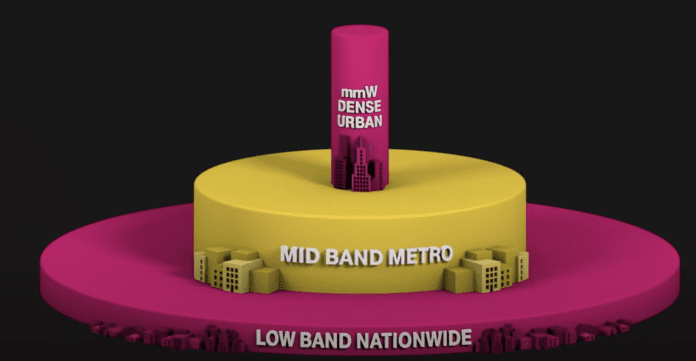The New T-Mobile 5G layer cake strategy appears to be working
The multi-billion dollar T-Mobile US and Sprint merger closed on April 1, and a few weeks later, President of Technology of New T-Mobile, Neville Ray, provided a video update on network integration efforts as he oversees the nationwide effort. Ray spoke specifically about the operator’s 5G “layer cake” strategy, a three-tiered combination of millimeter wave spectrum in dense urban areas, Sprint’s 2.5 GHz mid-band spectrum for metro coverage, and 600 MHz for nationwide 5G.
And the cake appears to be working out well according to a recent Ookla speed test, which revealed that post-merger, New T-Mobile has doubled its average 5G speeds in Philadelphia, from 60Mbps to 120Mbps.
Because Philadelphia is one of the few locations in the U.S. that can claim 5G services courtesy of all major carriers, it makes a great point of comparison when it comes to determining which carrier is leading the way.
Prior to both the Sprint/T-Mobile merger and the pandemic lockdown, RootMetrics reported a snapshot of the 4G/5G coverage and speed situation in Philly, concluding the following 5G median download speeds: AT&T achieved 94.5 Mbps; Sprint achieved 40.9 Mbps; T-Mobile achieved 41.0 Mbps; and Verizon clocked in at 239.6 Mbps.
While it’s important to keep in mind that New T-Mobile’s new average speed of 120Mbps are skewered by peak numbers in a way that a median speed won’t be, it’s still indicative of 100% improvement over previous average download speeds.
The improvement is largely driven by that fact that T-Mobile now has the 2.5GHz band at its disposal, and because the combined Sprint and T-Mobile 5G network covered almost 38% of Philly even before merging the bands, the operator can now claim that its 5G network in Philadelphia alone surpasses Verizon’s entire nationwide mmWave coverage area.
When New York City got its own layer cake in early May, for instance, the improvement of the 5G network’s average download speed was notably less impressive because New T -Mobile’s coverage area in NYC is much smaller.


